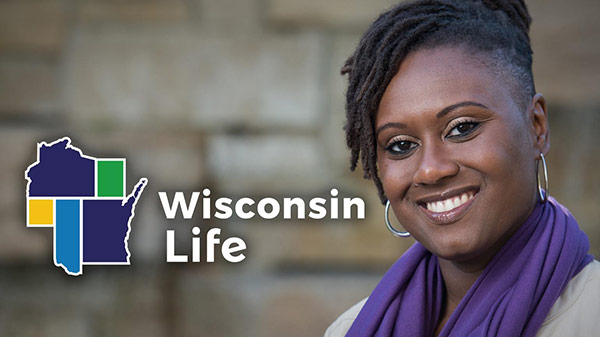Frederica Freyberg:
Citizens are polarized over more than politics in Wisconsin. Wolves and whether to hunt and harvest them and how many to take evoke strong emotions on both sides. This week, the DNR board voted to reduce the wolf season quota to 156 animals down from last year's 275. Earlier we sat down with the DNR's David MacFarland, who joined us from Rhinelander. We started by asking why the agency took action to reduce the wolf harvest.
David MacFarland:
Every year the DNR evaluates the population data we have, the objectives for the management program, and adjusts quotas accordingly. This is true of all species, not just wolves. We do this annually for deer, bears, bobcats, you name it.
Frederica Freyberg:
It represents almost a 40% reduction from last year, though, right?
David MacFarland:
It does. Last year at this time the quota was 275 and the 2014 quota is set at 156. That’s in response to observed population declines of approximately 18% from last year, and adjustment in the objectives for this year.
Frederica Freyberg:
What’s the total population now? And how does that compare to when the wolf came off the endangered species list in 2012?
David MacFarland:
We estimate the population annually by a late winter minimum population count. And at the time of de-listing, the minimum population count was 815 animals. We currently have a late-winter estimate of 660 to 689.
Frederica Freyberg:
What’s the perfect population that the DNR is going for?
David MacFarland:
Well, that's the million dollar question. The department is required to implement both state law and approve policies. The current policy that drives wolf management is the Wolf Management Plan. It was originally approved in 1999 and re-evaluated and re-approved in 2007, and it sets a population objective of 350 animals. And so the management actions that have been taken to date are designed to work towards that objective. Now, that said, the natural resources board has directed the department to re-evaluate the Wolf Management Plan and develop a revised and updated plan, which we’re working on now, and we anticipate that plan will be finalized and approved by February of next year. And so we’re simultaneously implementing the current plan, but then also working towards evaluating that plan.
Frederica Freyberg:
What’s the objective of the new plan? And also, why does the DNR want to kind of limit the number of wolves in Wisconsin?
David MacFarland:
Well, the new plan hasn’t been fully developed yet. We haven’t made decisions yet on what a population goal will be. It may stay the same, it may change. We don’t know yet. In terms of why we would limit population size, this isn’t unique to wolves. We do this for many species. For example, deer. We’re continually trying to find a good point between the biological carrying capacity of the animal and then what is socially tolerable. Same with bears, and we’re now doing that with wolves.
Frederica Freyberg:
What is the problem with wolves for people who have them in their midst?
David MacFarland:
Well, I think that’s in many ways a matter of perception. Different people would answer that question differently. We certainly have some quantifiable conflicts with wolves, as we do with all species. For example, wolves do kill cattle and can cause problems for the cattle industry. They also kill hunting dogs, and that’s certainly a conflict for people who own those dogs. So there’s a number of issues, and depending on who you talk to, they may focus on one versus another.
Frederica Freyberg:
What does the DNR say to critics who say that wolves should be protected, not hunted?
David MacFarland:
Well, that’s certainly a valid viewpoint, and we’ve had a long period of protection in Wisconsin under federal endangered species act. And now what we’re trying to do as a department is balance those views with the views of individuals in the state who believe that the wolf population is too high and that the conflicts that are being experienced are too great, and that that warrants population reduction. And so our role as the management agency in the state is try to find a balance between those very diverse viewpoints.
Frederica Freyberg:
All right. David MacFarland, thanks very much.
David MacFarland:
Thanks for having me.
Frederica Freyberg:
The wolf season opens October 15 and runs through February, depending how soon the quota is met.
Search Episodes
Related Stories from PBS Wisconsin's Blog

Donate to sign up. Activate and sign in to Passport. It's that easy to help PBS Wisconsin serve your community through media that educates, inspires, and entertains.
Make your membership gift today
Only for new users: Activate Passport using your code or email address
Already a member?
Look up my account
Need some help? Go to FAQ or visit PBS Passport Help
Need help accessing PBS Wisconsin anywhere?

Online Access | Platform & Device Access | Cable or Satellite Access | Over-The-Air Access
Visit Access Guide
Need help accessing PBS Wisconsin anywhere?

Visit Our
Live TV Access Guide
Online AccessPlatform & Device Access
Cable or Satellite Access
Over-The-Air Access
Visit Access Guide
 Passport
Passport








Follow Us